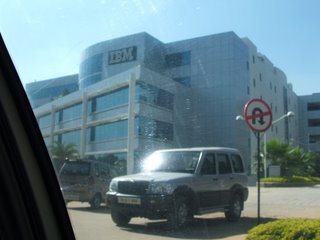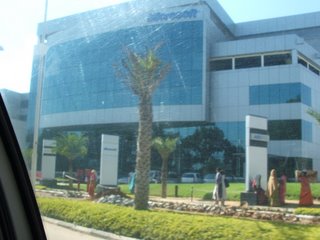Supercomputers, Not Just for Chess, Weather, and Nuclear Bombs?
Like most of you, I have marginalized the super computer space as a kniche I'll never play in. I considered that the realm of big government agencies predicting where the next hurricane will strike or modeling the temperature and density of uranium and hydrogen isotopes inside a nuclear bomb 9 nanoseconds after detonation. (Sorry, I read The Sum of All Fears.)
Well... my opinion was changed by an unlikely source yesterday. I stumbled across an investing article by The Motley Fool called "Do the Math: IBM Wins" in which the Fools extol the virtues of IBM as the best blue chip stock of 2007 because of supercomputing.
"I am convinced that IBM is going to be the best blue chip of 2007, but not just because it is a leader in the development and creation of supercomputers. Rather, it is because I believe that IBM's Global Consulting business, working in conjunction with its Center for Business Optimization (whose small staff specializes in applying advanced mathematics to business problems), will be able to first help businesses harness the power of these powerful computers to crunch data and then translate that data into meaningful -- and profitable -- insights."So it appears now I have to consider yet another hardware option in my solutions. I suppose somebody in IBM or Cray or both is selling super computer cycles "on demand" in a hosted environment for anybody who wants to rent one for a millisecond or two. (or is that nanosecond or two?)
"For example, IBM's Center for Business Optimization recently helped a company that had more than 70,000 SKUs (stock keeping units) with an inventory problem. Normally, finding the best way to manage this number of products would have taken six hours. With a supercomputer, it took 17 seconds.What this implies in more practical terms is that the company, instead of waiting overnight for results, now gets them immediately. More importantly, because the results are available immediately, the company can now insert different variables into the program to find an even better way to optimize its inventory."
Copyright © 2006 by Philip Hartman - All Rights Reserved
The postings on this site are my own and don't necessarily represent IBM's positions, strategies, or opinions.





